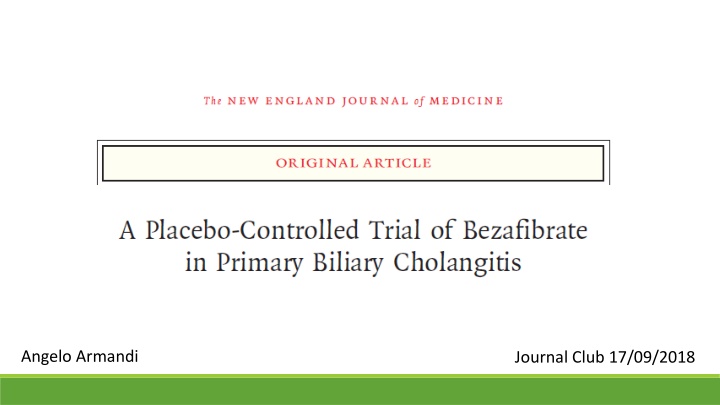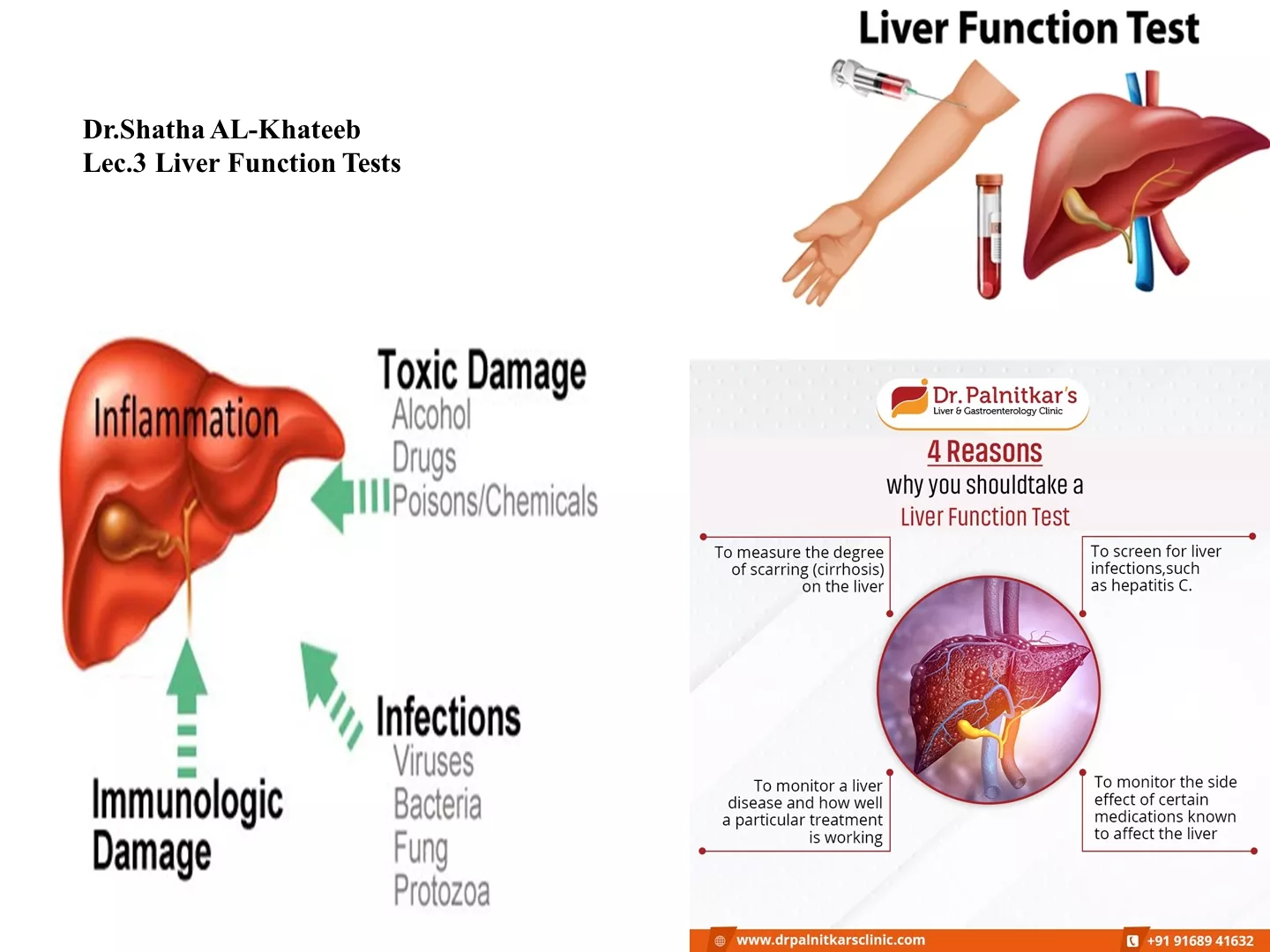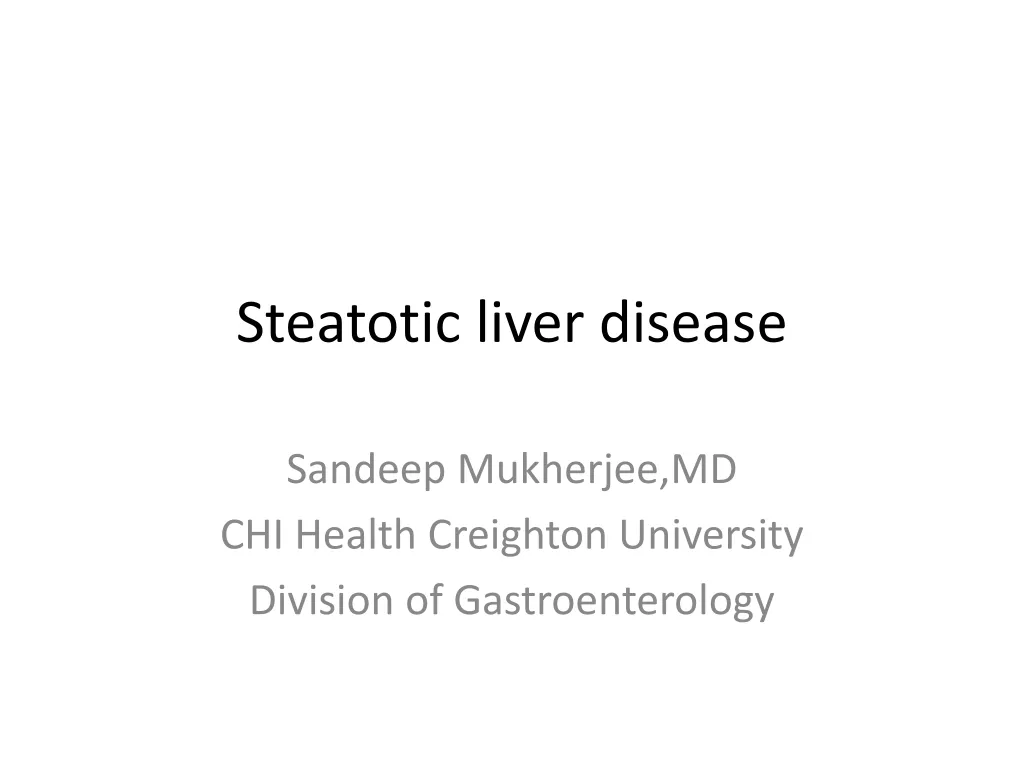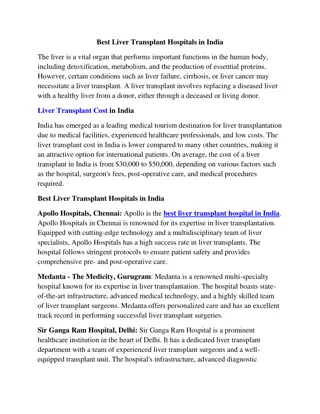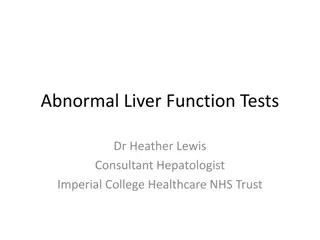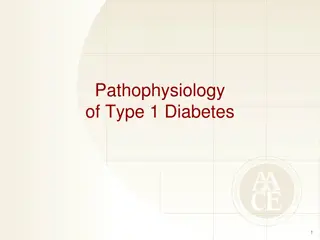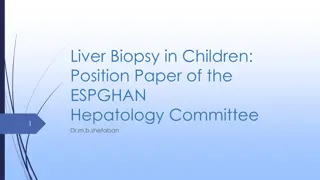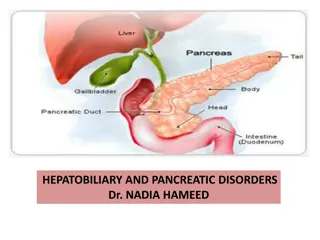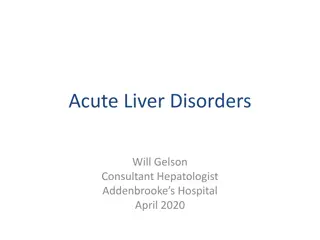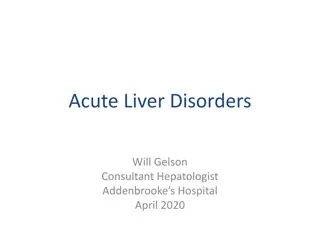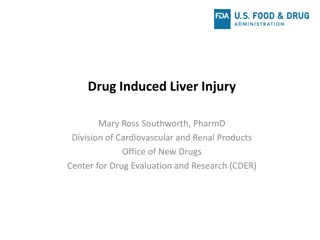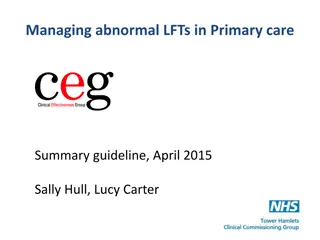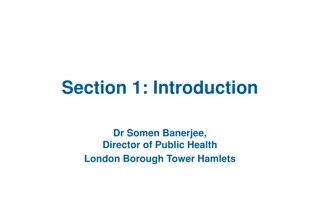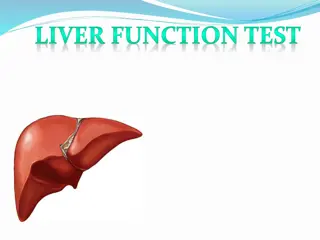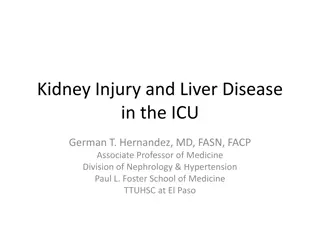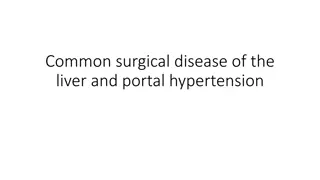Primary Biliary Cholangitis: Understanding the Autoimmune Liver Disease
Chronic inflammatory autoimmune cholestatic liver disease affecting small biliary ducts. Unknown etiology involving immune and biliary pathways. Loss of immune tolerance with AMA antibodies targeting PDC-E2. Macrophage and T cell activation leading to inflammation and fibrosis. Impaired bile acid secretion, stellate cell activation, and involvement of PPARs and FXR. Histopathological features include non-suppurative cholangitis, bile duct epithelium disruption, fibrosis, and cirrhosis. Associated with Hashimoto's thyroiditis, Sjogren's disease, celiac disease.
Download Presentation

Please find below an Image/Link to download the presentation.
The content on the website is provided AS IS for your information and personal use only. It may not be sold, licensed, or shared on other websites without obtaining consent from the author.If you encounter any issues during the download, it is possible that the publisher has removed the file from their server.
You are allowed to download the files provided on this website for personal or commercial use, subject to the condition that they are used lawfully. All files are the property of their respective owners.
The content on the website is provided AS IS for your information and personal use only. It may not be sold, licensed, or shared on other websites without obtaining consent from the author.
E N D
Presentation Transcript
Angelo Armandi Journal Club 17/09/2018
PRIMARY BILIARY CHOLANGITIS (PBC) Chronic inflammatory autoimmune cholestatic liver disease Small biliary ducts involved European prevalence: 1.9-42/100.000 Female predominance; V-VI decade
Unknown etiology: interaction of immune and biliary pathways leads to a chronic inflammation, cholestasis and liver fibrosis
Loss of immune tolerance: antimitocondrial antibodies (AMA) targeting PDC-E2, as a hallmark of PBC. Molecular mimicry? Criptic self epitope exposure?
Macrophage and T cell activation: increase in cytokine production (IFN, TNF, IL-12), inducing biliary epithelial cell (BEC) apoptosis or senescence
Impaired activity of bicarbonate secretion and hydrophobic bile acids contribute to the damage and perpetuate the proinflammatory state Activation of stellate cells leads to further inflammation, biliary stasis and fibrosis
Peroxisome proliferator- activated receptors (PPARs) are nuclear receptors involved in carbohydrate and lipid metabolism. They have shown to have anti fibrotic, anti inflammatory and insulin sensitizing properties. Farnesoid X receptor (FXR) is a nuclear receptor expressed in tissues involved in the enterohepatic circulation of bile acids. It regulates the metabolism of bile acids. In addition, its pathway signaling impacts on inflammation and liver fibrosis.
Histopatologic features of PBC Non-suppurative, granulomatous, lymphocitic cholangitis Periductal inflammatory infiltrate (plasmacells and eosinophils) with disruption of bile duct epithelium Bile duct loss Marginal ductular reaction Copper associated protein deposits Fibrosis Cirrhosis
Associated diseases: Hashimoto s thyroiditis, Sjogren disease, celiac disease, systemic sclerosis Evaluate drug history to rule out DILI (amoxicillin/clavulanate, azathioprine, anabolic steroids)
Pruritus Fatigue Xanthoma/xanthelasma Jaundice Osteoporosis Decompensated cirrhosis
Obeticholic acid vs Fibrates Obeticholic acid Fibrates Semi-synthetic hydrofobic bile acid analogue that is highly selective for FXR Variable activation of PPARs: inhibition of bile acid synthesis (PPAR- ) and suppressive effect on immune response Biochemical efficacy in patients with ALP > 1.67 x ULN and/or bilirubin elevated < 2 x ULN Reduced clearance of NSAIDs Dose dependent exacerbation in pruritus (treatment discontinuation in 1-10% of patients) Increase in serum AST/ALT levels Musculoskeletal pain and creatinine elevation (Bezafibrate) Increase in LDL and decrease in HDL Initial dose 5 mg; dose titration to 10 mg according to tolerability at six months Improvement in surrogate markers of long-term prognosis
Participants Patients 18 years of age or older with established diagnosis of PBC recruited at 21 centers Inadequate biochemical response to UDCA according to Paris 2 criteria after at least 6 months of therapy Patients with total bilirubin level above 3 mg/dl were excluded
Trial oversight Trial oversight Randomized, double-blind, placebo-controlled trial Patients randomly assigned to receive Bezafibrate (400 mg) or placebo Both groups received UDCA therapy Follow up assessments performed at baseline and every 3 months for 24 months
Outcomes Complete biochemical response (ALP, AST, ALT, total bilirubin, albumine, prothrombin time) at 24 months Normal ALP level at 24 months Specific changes (AST, ALT, ALP, GGT, total bilirubin) at various time points during the trial Changes in liver stiffness Changes in pruritus intensity, fatigue and quality of life Development of portal hypertension
60% 60% 18% No significant increase in cirrhosis
67% BZF and 2% placebo had normal ALP at 24 months
22% 15% Histologic data were available only for 28 patients at both baseline and 24 months. In this subgroup, changes in histologic stage, fibrosis stage and activity grade did non differ significantly between the groups.
Clinical outcomes Features of portal hypertension developed in 19 patients, with no significant difference between the groups. Four patients had liver complication: liver transplantation (Bezafibrate) placed on a waiting list for transplantation (Bezafibrate) ascites (placebo) total bilirubin level more than 3 mg/dl (placebo)
One patient, who concomitantly reseived statin therapy, developed moderate, asymptomatic rhabdomyolysis at 3 months (resolved after discontinuation of bezafibrate) All cases of elevated aminotransferase levels in the bezafibrate group resolved within 3 months, either spontaneously or after glucocorticoids 3% 5%
Discussion (1) 1. One third of patients in the bezafibrate group reached the primary outcome 2. Changes with respect to pruritus and fatigue were consistent with the primary outcome 3. Rapid and sustained decrease in ALP and a total bilirubin, the most important prognostic factors in PBC 4. No increase in total bilirubin in patients with cirrhosis 5. Decrease in liver stiffness
Discussion (2) 6. Portal hypertension and ALP are independent predictor factors of treatment failure 7. Increase in serum creatinine level (renal hemodynamic changes? Increased creatinine release by muscle?) 8. Carefulness with patients with diabetes, hypertension or any known renal disease 9. Longer and larger studies are needed to assess the effect of bezafibrate on hard outcomes, such as liver transplantation and death
